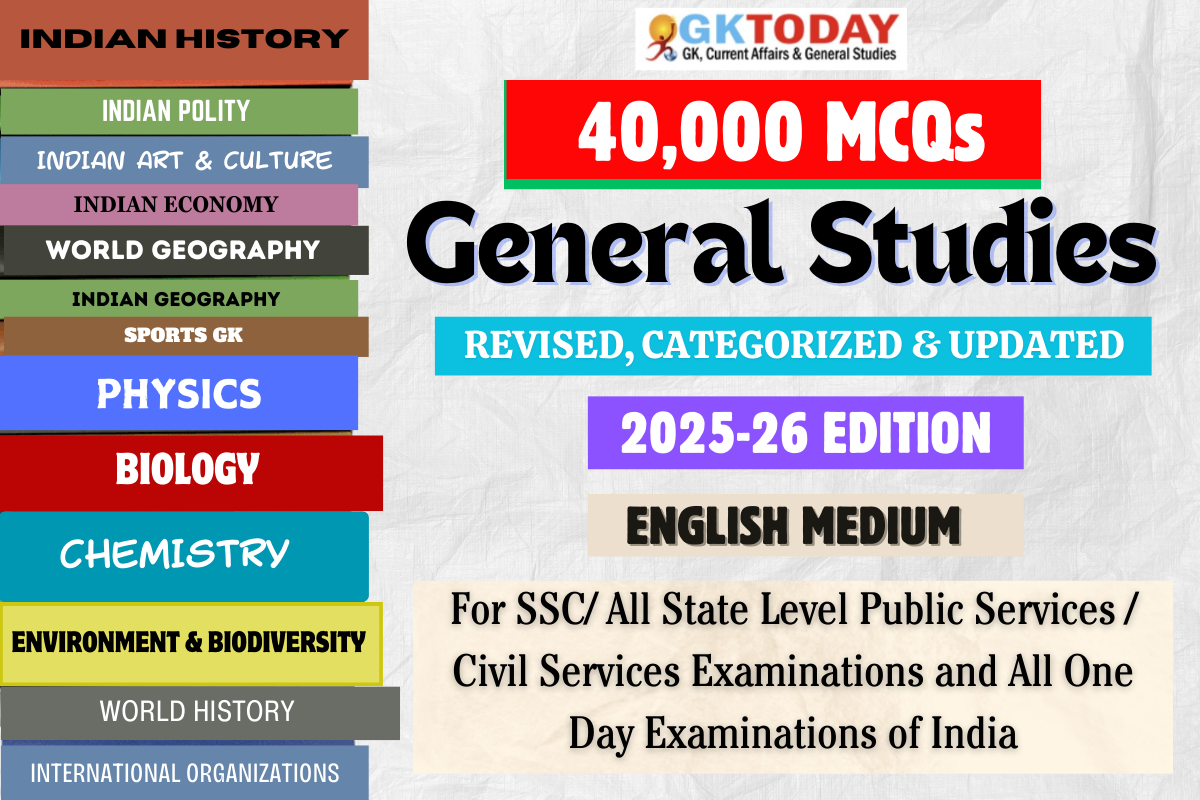Indian Polity & Constitution MCQs
Indian Polity & Constitution Objective / Multiple Choice (MCQs) Questions for Preparation of SSC-CGL, UPSC Civil Services, NDA, CDS, Railways and State Level Public Services Examinations.
1. Who among the following was the chairperson of the Provincial Constitution Committee of the Constituent Assembly?
[A] Jawaharlal Nehru
[B] Sardar Vallabhbhai Patel
[C] Dr. B.R. Ambedkar
[D] J.B. Kripalani
Show Answer
Correct Answer: B [Sardar Vallabhbhai Patel ]
Notes:
The constituent assembly appointed a number of committees to deal with different tasks of constitution. Sardar Vallabhbhai Patel was the chairperson of the Provincial Constitution Committee.
2. The decisions of District court is subject to what kind of jurisdiction of High Court?
[A] Advisory Jurisdiction
[B] Appellate Jurisdiction
[C] Original jurisdiction
[D] Judicial Review
Show Answer
Correct Answer: B [Appellate Jurisdiction]
Notes:
The district judge is the highest judicial authority in the district. Appeals against the orders and Judgements of the district judge lie to the High Court.
3. Who among the following headed the Advisory Committee on Fundamental Rights, Minorities and Tribal and Excluded Areas a committee under the Constituent Assembly?
[A] Jawahar Lal Nehru
[B] Vallabhbhai Patel
[C] H C Mukherjee
[D] Maulana Azad
Show Answer
Correct Answer: B [Vallabhbhai Patel]
Notes:
The Advisory Committee on Fundamental Rights, Minorities and Tribal and Excluded Areas was headed by Sardar Vallabhbhai Patel. Patel presented the committee’s recommendations on political safeguards for minorities sans separate electorates which were adopted by the Constituent Assembly.
4. The ideals of liberty, equality and fraternity in the Preamble are borrowed from the Constitution of which country?
[A] French Constitution
[B] Australian Constitution
[C] British Constitution
[D] USSR Constitution
Show Answer
Correct Answer: A [French Constitution]
Notes:
The principles of Republic and the ideals of liberty, equality and fraternity in the Preamble of the Constitution of India are borrowed from the French Constitution. These ideals were born during the French Revolution of 1789.
5. Which among the following was the first attempt to regulate the affairs of English East India Company in India?
[A] Pitts India Act 1784
[B] Charter Act 1833
[C] The Regulating Act 1773
[D] Charter Act of 1813
Show Answer
Correct Answer: C [The Regulating Act 1773]
Notes:
Regulating Act of 1773 was the first landmark in the constitutional development of India. Via this act, the British Parliament for the first time interfered into affairs of India. The Prime Minister of England at the time of Regulating Act of 1773 was Lord North.
6. Who among the following was the first president of Constituent Assembly of India?
[A] Dr. Sachchidananda Sinha
[B] Dr. Rajendra Prasad
[C] Professor Harendra Coomar Mookerjee
[D] Dr. B R Ambedkar
Show Answer
Correct Answer: A [Dr. Sachchidananda Sinha]
Notes:
Dr. Sachchidananda Sinha was the first president (temporary chairman) of the Constituent Assembly when it met on December 9, 1946. Dr. Rajendra Prasad then became the President of the Constituent Assembly, and would later become the first President of India. The Vice President of the Constituent Assembly was Professor Harendra Coomar Mookerjee, a former Vice-Chancellor of Calcutta University and a prominent Christian from Bengal, who also served as the Chairman of the Constituent Assembly’s Minorities Committee; he was appointed Governor of West Bengal after India became a republic.
7. Which amendment of the Constitution abolished the special privileges of ICS officers and empowered the Parliament to determine their service conditions?
[A] Twenty-eighth Amendment Act, 1972
[B] Twenty-fourth Amendment Act, 1971
[C] Twenty-ninth Amendment Act, 1972
[D] Twenty-sixth Amendment Act, 1971
Show Answer
Correct Answer: A [Twenty-eighth Amendment Act, 1972]
Notes:
Constitution (28th) Amendment Act, 1972 abolished the special privileges of ICS officers and empowered the Parliament to determine their service conditions. It has provisions of deletion of article 314 and inclusion of a new article 312-A which confers powers on Parliament to vary or revoke by law the conditions of Civil Services.
8. Which article of the Indian Constitution provides for a Governor?
[A] Article 152
[B] Article 153
[C] Article 154
[D] Article 156
Show Answer
Correct Answer: B [Article 153]
Notes:
Article 153 of the Constitution of India requires a governor to be appointed for every state in India.
9. The establishment of LokPal in India was recommended by the Administrative Reforms Commission (1966) on the lines of Ombudsman in the following countries?
[A] Finland & Norway
[B] Finland, Denmark & Norway
[C] Finland, Norway, Denmark & Switzerland
[D] Finland, England & Norway
Show Answer
Correct Answer: B [Finland, Denmark & Norway]
Notes:
The establishment of LokPal in India was recommended by the Administrative Reforms Commission (1966) on the lines of Ombudsman in Finland, Denmark and Norway.
10. Which of the following Union Territory has one Rajya Sabha seat ?
[A] Dadra & Nagar Haveli
[B] Daman & Diu
[C] Puducherry
[D] Lakshadweep
Show Answer
Correct Answer: C [Puducherry]
Notes:
Seven states of India viz. Arunachal Pradesh, Goa, Manipur, Meghalaya, Mizoram, Nagaland, Sikkim and Tripua have one Rajya Sabha seat each. One Union Territory viz. Puducherry also has one Rajya Sabha seat. Another UT National Capital Territory of Delhi has 3 Rajya Sabha seats. No other Union Territory has representation in Rajya Sabha as of 2023.

